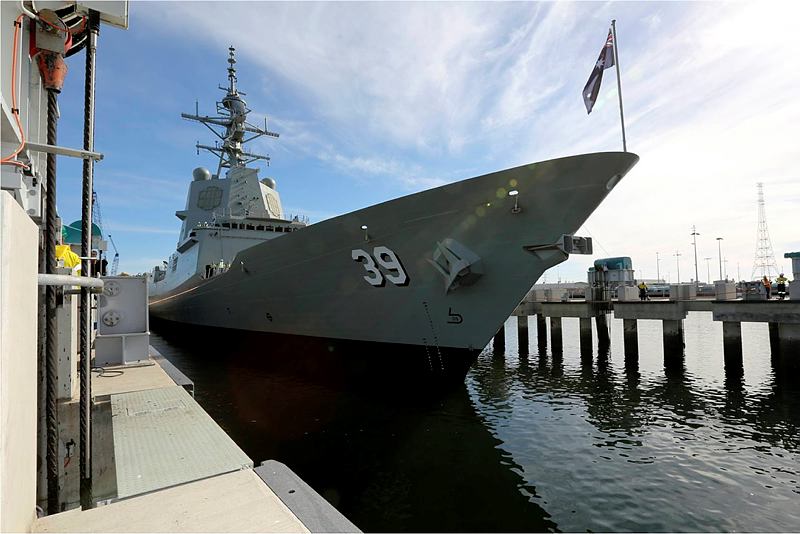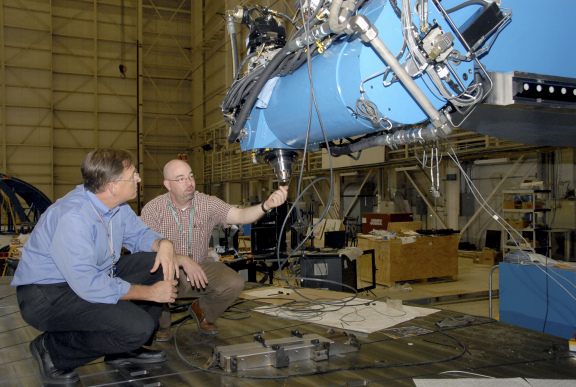The trials ahead for Pete Hegseth

Donald Trump’s new defense secretary, Pete Hegseth, has enormous challenges ahead of him—challenges that could seriously affect Australia by upsetting key elements of our ally’s defence position, including its ability to deliver the Virginia class submarines that are so crucial to our AUKUS plans.
At the heart of problem is Trump’s hallmark tax cuts and the space he needs to clear in the federal budget to enable the cuts without driving the deficit much deeper into the red. The Republicans are aiming to get their program through Congress by bundling everything together into one or two big omnibus bills. This should help them manage their narrow majorities in the Senate and the House of Representatives, but it creates potential problems among the deficit hawks on their own right flank who will be stripped of the ability to debate the cost of individual programs.
This group of Republicans insist that changes to taxes and spending must be at least budget neutral. They are deeply disturbed by the fact that, since the end of the Cold War, government debt has grown from about 40 percent of GDP to 123 percent today and is still rising at about 9 percent per annum. Unchecked, it could get to about 195 percent of GDP by 2050.
The principal threat to an ability to balance the budget is Trump’s desired tax cuts. The Committee for Responsible Federal Budget calculates that they would cost between US$5 trillion and US$11.2 trillion through to 2035, counting both the permanent extension of Trump’s first term tax cuts—which are due to expire at the end of this year—and new cuts he has promised. These have both been flagged as top administration priorities.
Although Trump seems intent on using tariffs to boost revenue—unlike in his first term, when he was motivated by protecting American industry—it is clear his tariff policy will not resolve his deficit problem should he press his tax changes.
The Tax Foundation, an independent non-profit organisation, estimates that a universal 10 percent tariff would raise $2 trillion through to 2034 and a 20 percent tariff $3.3 trillion—though it would be less if, as expected the tariffs shrink the US economy. This would ‘fall well short of what is needed’ to cover the permanent extension of Trump’s first term tax cuts, let alone the new cuts.
Meanwhile, Trump has outsourced the task of cutting spending to self-proclaimed ‘first buddy’ Elon Musk and his Department of Government Efficiency, or DOGE. It reportedly is staffed mostly by young men Musk has brought across from the tech sector who have the job of eliminating programs and public servants. Musk suggests that any serious problems arising from haste will be fixed later. Sometimes, as with the sacking of many of those assigned to the supervision of the nuclear weapons stockpile, they have had to be fixed sooner rather than later.
This is one part of the headache Hegseth will soon have to deal with. He is responsible for the most complex and expensive department outside those that handle social payments. Defence also has the deepest and strongest cultural disciplines—particularly in the armed services—and the most complex and expensive technologies in the world. Going into the November election, the approved outlays for defence were US$895 billion. Trump promised an increase but has since pointed the DOGE directly at defence.
In an interview on Super Bowl day, Trump said he expected to find ‘billions, hundreds of millions in fraud and abuse’ in defence. His national security advisor, Mike Waltz, suggested in a separate interview that ‘the Pentagon in general is full of unnecessary bloat’ and directed aim particularly at shipbuilding, which he said was ‘a mess’. Yet that program is at the heart of American power. It is also quantitively, and increasingly qualitatively, challenged by Chinese programs. The shipbuilding industry and the systems supporting the United States Navy are among the most sensitive that the US has.
They are also particularly vital for Australia. The rate at which the US can build submarines needs to improve if they are to deliver Virginia class boats to the Royal Australian Navy in the 2030s, as planned under AUKUS. Australian Defence Minister Richard Marles made a $500 million down payment to enhance the US submarine industrial base as part of the AUKUS package during his positive meeting with Hegseth in early February—the first Hegseth had with a foreign counterpart. Hegseth committed himself to the AUKUS programme including the sale of Virginias, which will be a formidable deterrent and a critical part of Australia’s defence.
Senior Pentagon official Robert Salesses said in a statement this week that Hegseth had launched a review to find 8 percent of the defence budget for the 2026 financial year—about $50 billion—in offsets that would realign spending towards priorities such as border security, an Iron Dome-style aerial defence system. Hegseth had also ordered an end to ‘diversity, equity and inclusion’ type programs. The Washington Post reported the existence of a memo indicating these offsets—which the news report called ‘cuts’—would continue for five years, though it noted that submarine acquisition was among the categories listed for exemption.
The US submarine output rate has been gradually coming up to the levels of production necessary for the AUKUS timetable. What will happen now?
The shipbuilding program, the assertive posture of DOGE and any cuts to the Pentagon overall, represent for Hegseth a massive difficulty. A defense secretary doesn’t have to be loved, but he or she does have to be respected. This includes respect for the values the armed services evince. The military is proud of its capacity to incorporate women and people of colour in all facets of command and recruitment. Above all is a requirement that its manifold security arrangements cannot be put in the hands of people not qualified and cleared. The youngsters of DOGE are not. The Pentagon will look to Hegseth for that protection—as indeed will we and all the military allies of the US.
If it is thought in the Pentagon that Hegseth can’t cope with the need to protect both secrecy and capability, he will be lost. For any defense secretary, such a failure would be intolerable. It will be particularly so for congressional Republicans who have had to swallow a great deal to approve the appointments of Trump’s choices in the national security area.
All this will be playing out in an environment in which one or two omnibus bills will be hotly contested in Congress.
It has to be remembered that the US is not at the peak of post-World War II spending. Were that to be the case, defence spending would not be at $895 billion; it would be closer to $2 trillion. Chinese and Russian expenditures are at least as great as they were during the Cold War.
The US is looking for a massive increase in allied spending. Trump has set targets of at least 3.5 percent of GDP, hopefully 5 percent. The allies are nowhere near these targets. Australia is increasing to 2.4 percent of GDP—far short of what Trump wants. We can expect the US administration to come at us. But our challenge is miniscule compared to that facing Hegseth.




